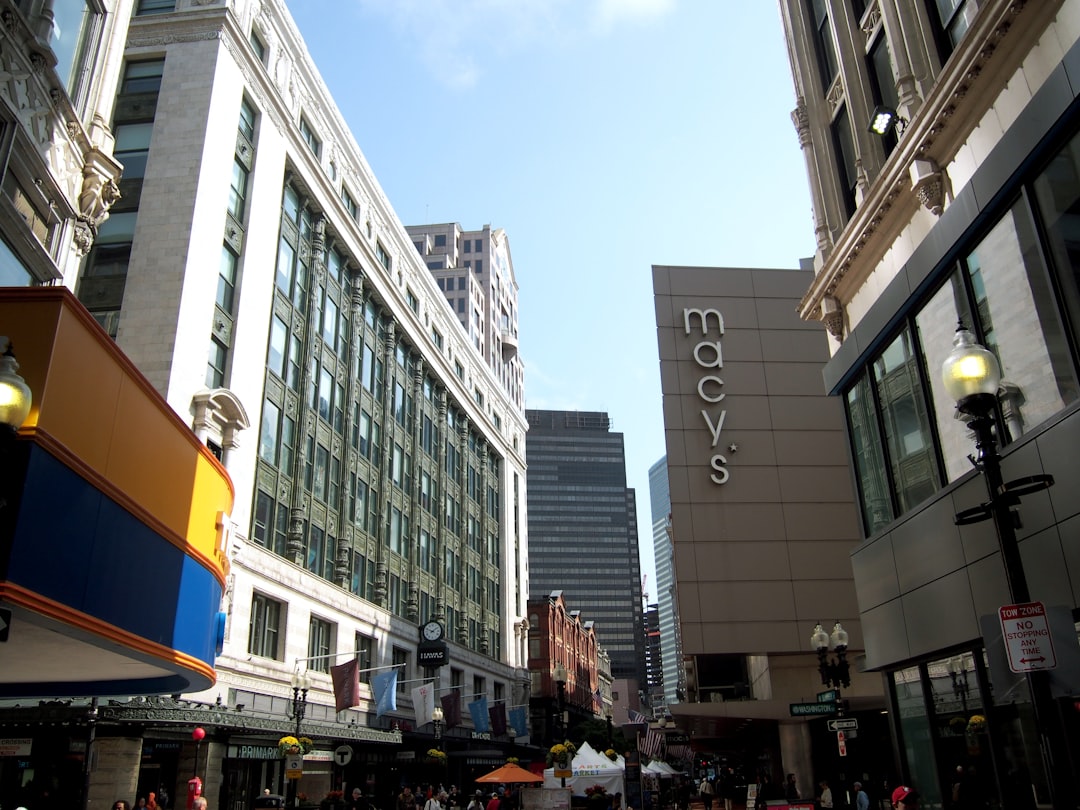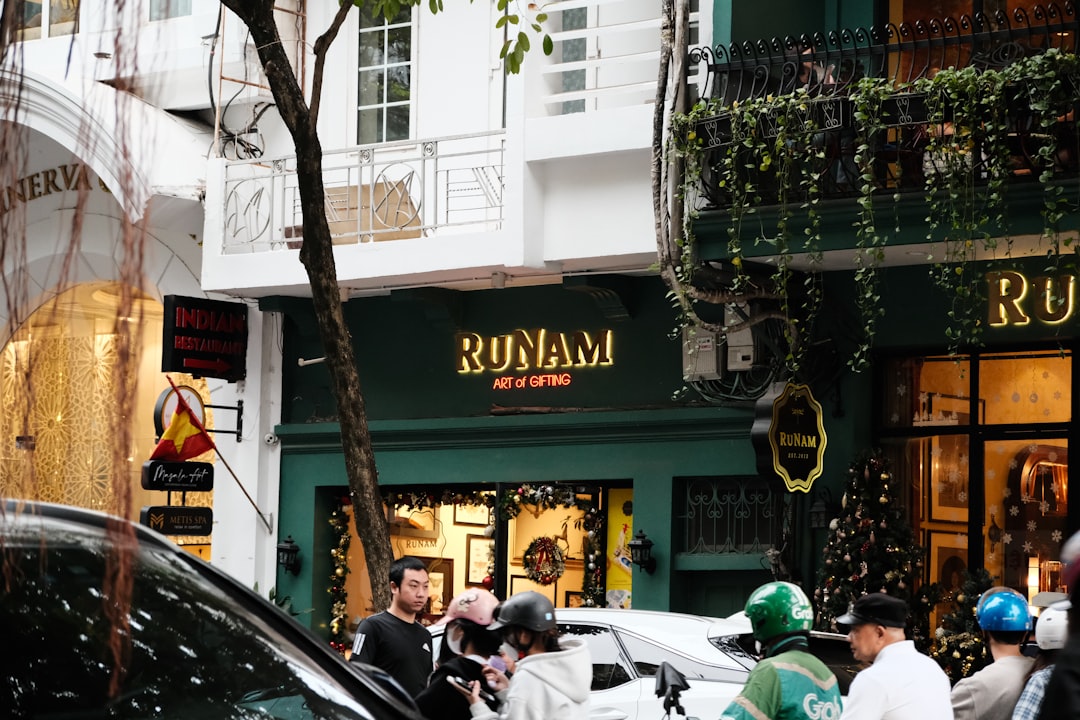Essential Retail Knowledge for Urban Planners
Essential Retail Knowledge for Urban Planners - Why Urban Planners Should Care About Storefront Economics
Understanding the economic forces at play behind urban storefronts is essential for planners today. The health of street-level retail is fundamentally linked to the vitality, functionality, and resilience of city districts. Successful storefronts contribute far more than commerce; they are critical in generating vibrant street life, fostering pedestrian environments, and creating places for community interaction. Planners must move beyond solely physical design considerations to grasp the underlying economics – including local market realities, consumer behavior patterns, and the often-overlooked challenges facing small businesses. Recognizing the economic constraints and potential misperceptions about urban retail potential is key. This economic literacy empowers planners to make better decisions about land use, zoning, and public space that can genuinely support diverse local economies, address persistent vacancy issues, and ultimately shape more dynamic and sustainable urban environments.
Observations drawn from various urban studies disciplines highlight several aspects of storefront economics that warrant careful consideration by those shaping the built environment. These are not merely commercial observations, but facets touching upon the fundamental performance and experience of urban areas.
1. Research exploring social dynamics in urban settings frequently points to the role of accessible, fine-grained retail in fostering informal social interactions and potentially contributing to localized social capital. The spatial provision of these frequent-use destinations appears correlated with patterns of neighborly connection and shared public life, moving beyond purely transactional relationships.
2. Analyses linking built form to public health outcomes often note the connection between environments that support walking and bicycling – including areas with a density of local retail amenities – and certain health metrics at the population level. The ease of accessing daily needs on foot or bike offers a direct pathway to integrating physical activity into routine behaviors.
3. Studies on urban real estate markets occasionally indicate that commercial properties situated within areas characterized by a diverse presence of active, small-scale retail may exhibit different patterns of performance, sometimes suggesting a degree of resilience during broader economic fluctuations compared to locations lacking such immediate localized economic activity. This complex interplay between land use and market behavior is ongoing research.
4. From a perspective focused on urban safety and human behavior, the visible activity associated with thriving ground-floor retail generates increased human presence along streets. This enhanced occupancy and observation, often referred to as natural surveillance, is theorized and sometimes shown empirically to influence perceptions of security and potentially deter certain types of opportunistic behavior in public spaces.
5. These retail environments can function as critical initial proving grounds for small businesses and entrepreneurial efforts. Their physical visibility, relatively lower barrier to entry compared to larger commercial spaces, and direct connection to a local customer base provide an empirical feedback mechanism valuable for testing and adapting new concepts within the urban economic landscape.
Essential Retail Knowledge for Urban Planners - Neighborhood Retail Beyond the Spreadsheet The Social Impact
Focusing on community connection, the role of local shops extends far beyond their balance sheets. While traditionally viewed through the lens of commerce, these neighborhood anchors are vital contributors to the health of urban communities, acting as informal gathering places and helping to shape local identity. Their struggles and disappearance have a real cost, fraying the social ties that bind residents and diminishing shared public life. Planners grappling with urban vitality must look past purely economic models and actively acknowledge the deep social value inherent in accessible, neighborhood-serving retail. The challenge requires developing strategies that not only aim for business sustainability but also consciously nurture these spaces as engines of social connection, belonging, and equitable participation within the urban landscape.
Observations from a less economically focused lens suggest several aspects of neighborhood retail's community impact for those examining urban structure and function.
One line of inquiry considers how the specific character and enduring presence of independent, neighborhood-serving businesses appear correlated with residents articulating a stronger sense of unique place identity for their locale, fostering a connection that extends beyond mere residential location.
Another perspective views these retail spaces as potential, albeit often informal, sites for intergenerational or cross-demographic encounters, occasionally providing rare physical environments where varied community members might share space and brief interactions, differing from more purpose-built or exclusive social venues.
A critical function often highlighted, particularly from an equity standpoint, is the provision of accessible destinations for daily needs and routine social exposure for specific populations, such as individuals with limited mobility or older adults, for whom proximate retail access can be essential for maintaining independence and quality of life in the urban setting.
Studies sometimes point to the role of these businesses as organic points within local information flows, acting as casual hubs where community news, local concerns, or event details might be exchanged informally among patrons and operators, supplementing or preceding more structured communication channels.
Finally, from a behavioral or public health viewpoint, the low-pressure, repeated social contact facilitated by routine visits to familiar neighborhood retail spots is sometimes noted as offering a small but potentially significant buffer against feelings of isolation for individuals, providing a predictable source of external engagement.
Essential Retail Knowledge for Urban Planners - Designing for the Street Level Learning from Past and Present Examples
Designing the ground floor of urban buildings, particularly for retail interfaces, involves drawing critical lessons from historical approaches and evaluating contemporary innovations. Looking back, certain design practices, perhaps prioritizing vehicular traffic or single-use zoning, often failed to adapt to changing urban dynamics and consumer needs, sometimes contributing to the decline seen in vacant storefronts. However, positive past examples and successful current projects highlight how integrating public space seamlessly with commercial activity at street level is crucial. Modern approaches often prioritize creating a mix of uses beyond just traditional shops – incorporating community spaces, places for making, and diverse service provisions – reflecting evolving resident expectations and supporting future demographic shifts. Effective street-level design learns from the past by consciously avoiding the isolation of commercial spaces and instead focuses on crafting a permeable, active, and multi-functional interface that enhances walkability and fosters a stronger connection between the built environment and the public realm. The goal is to build resilience not just through commerce, but through environments that are adaptable, engaging, and genuinely contribute to the daily life of the city.
Examining the physical interfaces between buildings and the public realm yields intriguing insights into pedestrian engagement and comfort. These observations, often quantitative or grounded in empirical study, highlight design elements that subtly but demonstrably shape how people interact with street-level environments.
Findings from various studies indicate specific design considerations at the ground floor warranting attention from a planning and engineering perspective:
Investigations into visual processing along commercial corridors consistently show that the degree of intricacy and perceived depth within street-facing displays notably influences the duration a pedestrian will pause and direct their attention towards a shop front.
Analytical assessments suggest the existence of a discernible threshold of ground-floor facade transparency below which blocks are less reliably perceived by individuals as vibrant and actively inhabited environments as they traverse them.
Measurements taken in diverse urban settings quantitatively confirm that adequate sidewalk dimensions correlate directly with an increase in the duration pedestrians linger and the potential for interaction with the commercial establishments immediately adjacent to the walkway.
Climatic modeling and field measurements have provided quantified data indicating that appropriately designed and positioned overhead projections, such as awnings, can significantly reduce surface and ambient air temperatures on adjacent pedestrian paths, thereby extending periods of comfortable outdoor presence and browsing.
Studies employing psychological frameworks on urban navigation propose that the perceived straightforwardness and visual coherence of a building's primary entry point can exert a subtle influence on a pedestrian's likelihood of approaching and ultimately entering the space.
Essential Retail Knowledge for Urban Planners - Keeping Pace with Retail Evolution From Bricks to Clicks and Back Again
Keeping pace with the continually transforming retail landscape means navigating a path that has moved significantly beyond the traditional storefront versus online divide. What began as a dominant physical presence, shifted dramatically towards digital channels, and is now integrating into a more complex ecosystem where brick-and-mortar and e-commerce capabilities are increasingly intertwined. By 2025, this blended reality is commonplace, with retailers across the spectrum, including those born online, strategically utilizing physical locations. For urban planners, this evolving dynamic poses challenges; understanding the shifting purpose and value proposition of physical retail space is fundamental. Success hinges on recognizing that the function of stores extends past simple transaction points and requires adaptation to complement the digital experience. This necessitates planning for flexibility and acknowledging the ongoing pressure on conventional models to remain relevant in a marketplace where consumer behaviour fluidly moves between online engagement and physical presence. Integrating physical retail effectively into urban design now demands anticipating future shifts and ensuring these spaces offer distinct contributions beyond purely commercial functions.
Observing the shifts in retail presence reveals several intriguing points for consideration by those involved in shaping urban space and infrastructure.
The expansion of digital commerce fundamentally alters the demand for urban industrial real estate. The need for efficient, rapid delivery to consumers close by drives the emergence of specialized facilities, sometimes termed micro-fulfillment centers, within or near residential zones. This represents a significant recalculation of industrial land use patterns, requiring careful spatial integration and management of increased local logistics traffic.
A curious counter-movement sees brands that originated solely online establishing a physical footprint. Evidence suggests that for some, the cost associated with acquiring new customers through volatile digital advertising markets is, in certain contexts, proving higher than engaging them via a tangible store presence. This isn't a simple return to past retail models, but rather an operational adjustment utilizing physical space as an engineered point of engagement, necessitating scrutiny of its contribution to the broader urban environment beyond transactional efficiency.
Furthermore, investigations into the psychology of consumer interaction highlight the unique sensory dimensions of physical retail. Studies indicate that the act of tactile engagement with goods—haptic feedback—activates specific cognitive functions vital for establishing trust and making purchase decisions in ways currently inaccessible through purely digital interfaces. This provides a fundamental behavioral anchor reinforcing the enduring utility of spaces where physical product interaction is possible.
From a systemic efficiency perspective, the environmental and logistical impact of the fragmented 'last mile' within e-commerce delivery networks presents a complex challenge. Despite potential consolidation of consumer trips, the energy consumption and associated emissions per item delivered can significantly escalate during the urban delivery phase, involving numerous vehicles completing short, dispersed routes. Managing this operational load effectively is a critical urban planning and engineering problem.
Finally, an analysis of evolving consumer journeys reveals phenomena like "webrooming"—researching online and buying in-store—is becoming increasingly prevalent. This behavior suggests physical stores serve vital roles beyond mere browsing, functioning as points for product validation, immediate acquisition, or simplified returns. It illustrates the interconnected nature of the hybrid retail system and reinforces the functional, albeit redefined, necessity for physical retail space as a node within the contemporary purchase process.
More Posts from urbanplanadvisor.com:
- →Reston Town Center Parking A Comprehensive Guide to Rates, Hours, and Garage Options in 2024
- →San Diego's Tailgate Park A Compact Urban Solution for Padres Fans' Pre-Game Festivities
- →Urban Mobility Analysis Mapping Pharmacy Access Around Major Transit Routes in Middletown's Commercial Corridors
- →Analyzing Detroit's Struggle A Deep Dive into America's Least Happy City in 2024
- →Edenwald Houses $480 Million Renovation Plan Set for Bronx's Largest Public Housing Complex
- →Urban Pharmacy Access Analyzing the Impact of Walgreens on East Washington Street's Community Health

